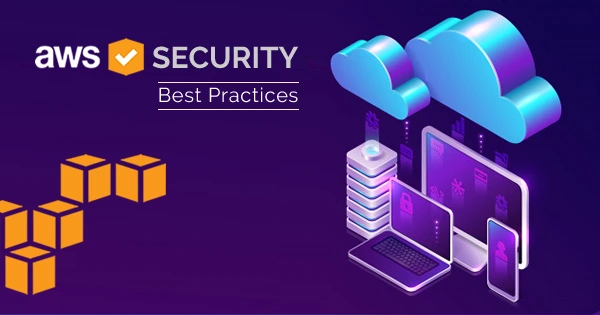AWS Security Best Practices: Safeguarding Your Infrastructure
Introduction
In today’s digital landscape, security is of paramount importance, especially when it comes to cloud infrastructure. Amazon Web Services (AWS) offers a wide range of services and features that can help you build and maintain a secure environment. In this article, we will delve into AWS security best practices, focusing on critical areas such as identity and access management, network security, encryption, and monitoring. If you’re looking to enhance your AWS security, consider hiring an experienced AWS developer.
Identity and Access Management (IAM)
Identity and Access Management is the foundation of securing your AWS infrastructure. Follow these best practices to establish strong access controls:
Principle of Least Privilege
Hire an AWS developer who can assist in assigning the minimum permissions necessary to perform specific tasks. Avoid granting excessive privileges, reducing the risk of unauthorized access or accidental misuse.
Use IAM Roles
Instead of relying on long-term access keys, a skilled AWS developer can help you utilize IAM roles to grant temporary permissions to AWS services and applications.
Multi-Factor Authentication (MFA)
An experienced AWS developer can assist you in enabling MFA for all IAM users, adding an extra layer of security. This ensures that even if an attacker acquires user credentials, they cannot access your resources without the additional authentication factor.
Network Security
Securing the network infrastructure is vital to protect your AWS resources. Here are some best practices to consider:
Virtual Private Cloud (VPC)
Hire an AWS developer to implement VPCs and create isolated network environments within AWS. Leverage security groups and network access control lists (NACLs) to control inbound and outbound traffic effectively.
Network Segmentation
An AWS developer can help you implement subnets and network segmentation to compartmentalize your infrastructure. This prevents lateral movement and reduces the impact of potential security breaches.
DDoS Protection
Collaborate with an AWS developer who has experience in implementing AWS Shield, which safeguards against Distributed Denial of Service (DDoS) attacks. AWS Shield provides automated protection and helps mitigate the impact of volumetric, state-exhaustion, and application-layer attacks.
Encryption
Data encryption ensures confidentiality and integrity, both at rest and in transit. Follow these encryption best practices in AWS:
Server-Side Encryption (SSE)
Hire an AWS developer to configure AWS-managed services like Amazon S3, Amazon EBS, and Amazon RDS to offer SSE. It automatically encrypts data at rest, providing a seamless way to enhance security.
Key Management Service (KMS)
Collaborate with an experienced AWS developer to effectively use AWS Key Management Service for centralized management of encryption keys. They can assist in creating and controlling the encryption keys used by your AWS resources.
Transport Layer Security (TLS)
An AWS developer can assist you in enabling TLS/SSL protocols to secure data in transit. They can help you configure your load balancers, APIs, and other services to use SSL certificates, ensuring secure communication channels.
Monitoring and Logging
Proactive monitoring and robust logging are crucial for identifying and responding to security incidents. Consider the following best practices:
AWS CloudTrail
Collaborate with an AWS developer to enable AWS CloudTrail to track and log all API calls made within your AWS account. This provides an audit trail of actions, helping you identify unauthorized or malicious activity.
AWS Config
An AWS developer can help you set up AWS Config to monitor resource configurations and changes. It provides visibility into resource relationships, configurations, and compliance with desired configurations.
Security Information and Event Management (SIEM)
Partner with an AWS developer to integrate AWS with a SIEM tool, such as AWS Security Hub or third-party solutions, to centralize security event monitoring and analysis.
Conclusion
Securing your AWS infrastructure is a shared responsibility between you and AWS. If you hire AWS Developers and by following these security best practices, you can establish a robust security posture and protect your resources from unauthorized access, data breaches, and other security risks. To remain ahead of new dangers, keep in mind to periodically assess and upgrade your security measures. With a strong focus on identity and access management, network security, encryption, and monitoring, along with the expertise of an AWS developer, you can build a secure and resilient AWS environment that meets the highest security standards.

